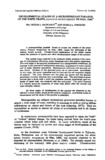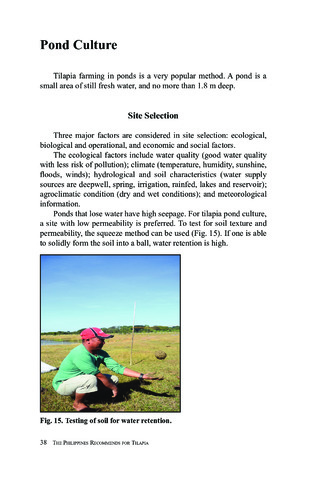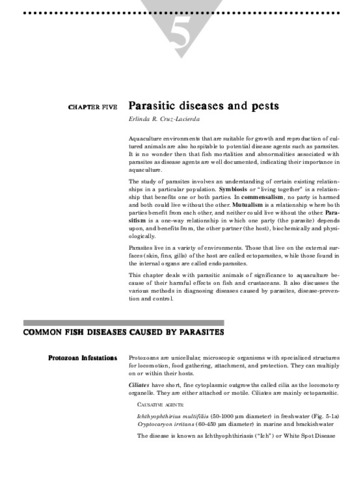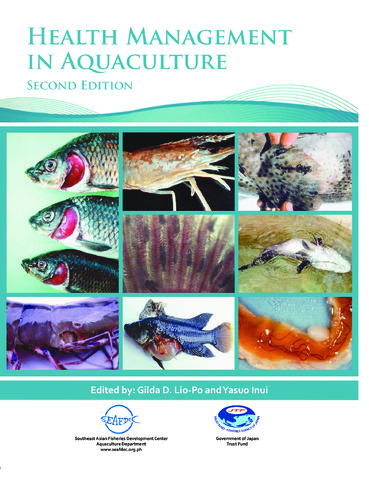Developmental stages of a microsporidian parasite of the white prawn, Penaeus merguiensis de Man 1888
Share
Abstract
A microsporidian parasite found to invade the ovaries of the white prawn, Penaeus merguiensis de Man, 1888, causes the whitening of the mature female gonads. Ultrastructure examination of the white ovaries reveal the presence of spores and other developmental stages of the parasite.
The earliest stage observed is the schizont which contains a few cisternae of endoplasmic reticulum, many ribosomes and a thin plasma membrane. The next stage is the sporont characterized by a pansporoblast membrane, an increase in the amount of endoplasmic reticulum, appearance of more vesicles and of polar filament precursors. Diplokaryotic schizonts and sporonts are also found. Division of the sporonts gives rise to uninucleate sporoblasts. At this stage, the spore organelles start to form and the cell acquires a degree of plarity. The polar filament and the polar sao appear and the sporont membrane complex develops into a sporoblast wall. The sporoblast is transformed into a spore with a polar cap, posterior vacuole, polaroplast, and two laters of spore wall, the exospore and the endospore. The polar filament is a tubular structure consisting of seven coils which after the second coil taper abruptly distally.
All these stages of development of the parasite are observed in the infected ovaries within which its life cycle is completed. A probable mode of transmission and life cycle of the parasite is presented.
Suggested Citation
Baticados, M. C. L., & Enriquez, G. L. (1982). Developmental stages of a microsporidian parasite of the white prawn, Penaeus merguiensis de Man 1888. Natural and Applied Science Bulletin , 34(3), 255-270. http://hdl.handle.net/10862/1123
Subject
Collections
- AQD Journal Articles [1249]
Related items
Showing items related by title, author, creator and subject.
-
[The Philippines recommends for tilapia:] Pond culture
Eguia, Maria Rowena R.; Vera Cruz, Emmanuel M.; Yap, Wilfredo G.; Somga, Joselito R.; Garcia, Yolanda T.; Salayo, Nerissa D.; The Tilapia Technical Committee 2017 (DOST-PCAARRD, 2018) -
Parasitic diseases and pests
Cruz-Lacierda, Erlinda R. (Aquaculture Department, Southeast Asian Fisheries Development Center, 2001)A wide variety of parasites have been identified as causing significant economic losses in fish and shrimp culture. Most of these parasites are difficult to control effectively with a single measure. The control of parasites ... -
Health management in aquaculture
Lio-Po, Gilda D.; Inui, Yasuo (Aquaculture Department, Southeast Asian Fisheries Development Center, 2010-07)A textbook on diseases of cultured warmwater fish and shrimps in the Philippines. Eleven chapters cover essential information on the basic principles of disease causation, major diseases of cultured fish and crustaceans, ...




